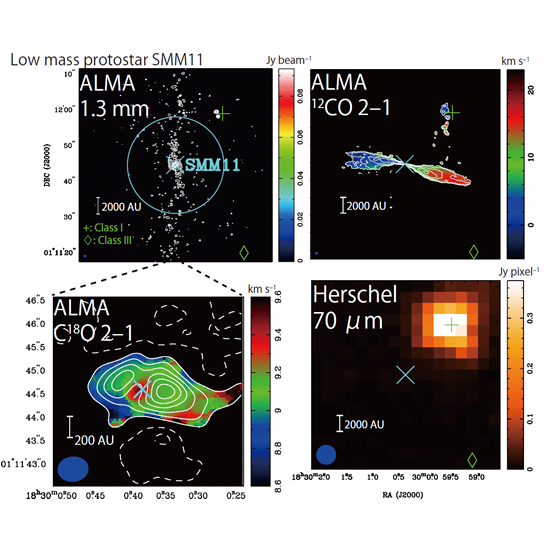Research Gallery > Star Formation Studies
Research Gallery
Star Formation Studies
| An extremely young protostar, SMM11, observed in millimeter wavelength |
|
Image Credit: Yusuke Aso

An extremely young protostar, SMM11, in the Serpens Main cluster forming region observed with ALMA in 1.3 mm continuum, 12CO J=2-1 line, and C18O J=2-1 line. These results, as well as submillimeter and infrared results, suggest that the protostar is in an early phase of star formation right after the second collapse.
|
| The first hydrostatic core (FHSC), core formed first in star formation, has not been observationally identified yet because of its short life time and low luminosity. The results have revealed low fluxes in <70 um and a low CO abundance of SMM11, suggesting a low temperature consistent with theoretical studies in the FHSC phase. The continuum emission suggests a spherical envelope, which is also consistent with its youth. On the other hand, its CO outflow velocity is a few tens km/s, suggesting presence of deep gravitational potential due to a protostar. SMM11 is, thus, considered to be in an early phase of star formation right after the second collapse (Aso et al. 2017, ApJL, 850, L2). |
 asiaa.sinica.edu.tw Media Request: epo
asiaa.sinica.edu.tw Media Request: epo asiaa.sinica.edu.tw
asiaa.sinica.edu.tw 
